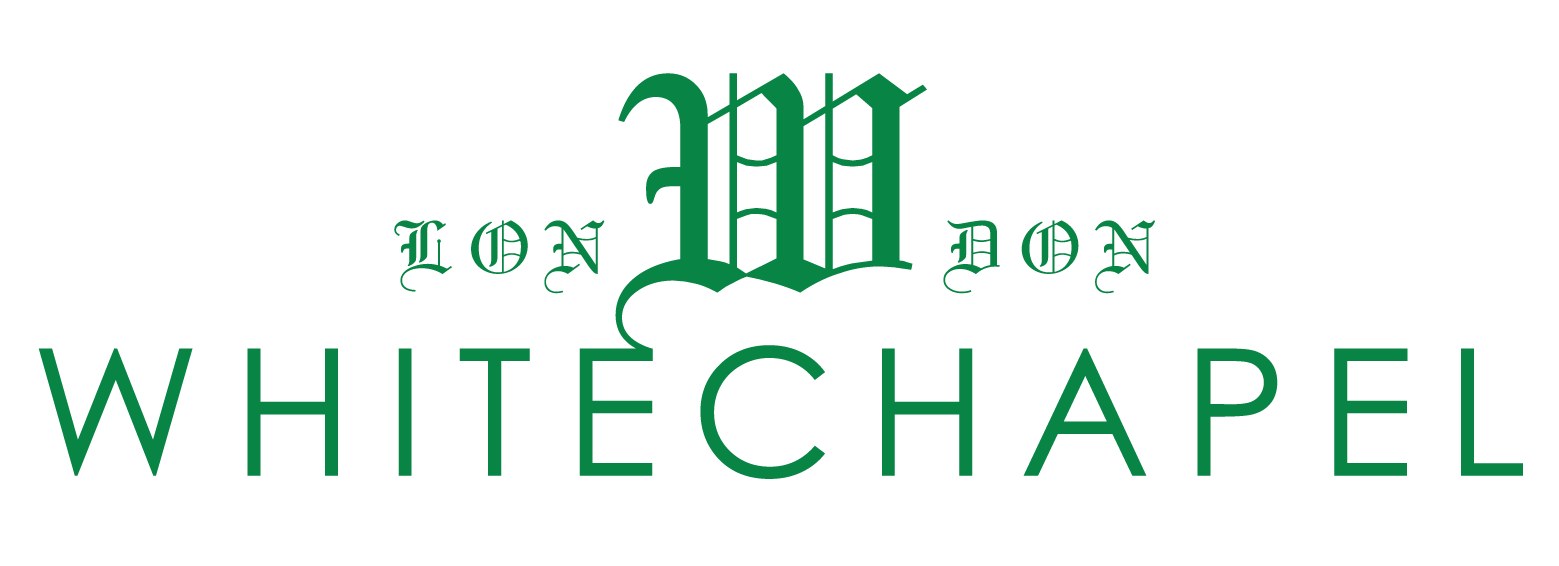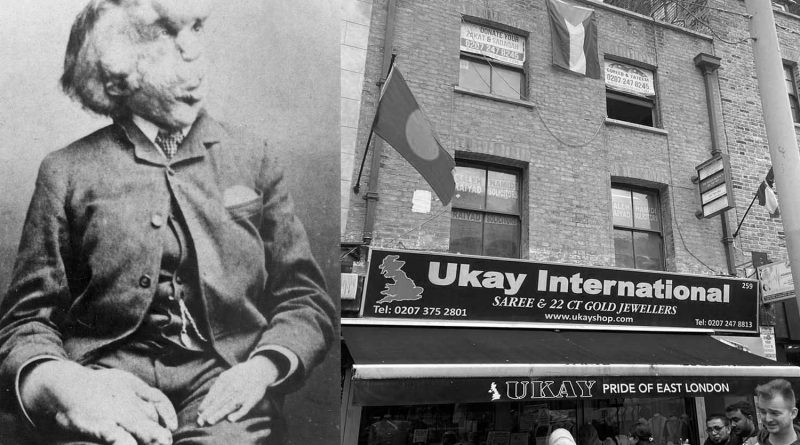Joseph Merrick ‘The Elephant Man’: his exploitation, saviour and early death in Whitechapel
Now a colourful saree shop, 259 Whitechapel High Street once witnessed the notorious exploitation of Joseph Merrick who came to be known as ‘The Elephant Man’.
Today, UKAY International’s display of colourful sarees entices passersby and acts as a thick layer of foundation on the scarred skin of the building’s tawdry past.
Two hundred years ago, the streets of Whitechapel were a very different place and this building, formally 123 Whitechapel Road, was a ‘penny gaff’, meaning a place for cheap entertainment.
A showman named Tom Norman would stand outside beckoning revellers inside to view what was called a ‘freak show’ in those days. At various times it included a troupe of little people, a “Man in a Trance”, “John Chambers, the armless Carpenter”, and the “World’s Ugliest Woman”.
One of these exhibits was a man called Joseph Merrick, who was given the moniker ‘The Elephant Man’ due to a condition that caused growths on his head and body. Norman would tell his visitors that The Elephant Man was ‘not here to frighten you but to enlighten you’ but at the core of these exhibitions was the blatant exploitation of people’s disabilities and differences for money.
Joseph Merrick ‘The Elephant Man’
Joseph Merrick was born in Leicester in 1862 and lived with his parents until his mother passed away and his father remarried.
Joseph Merrick suffered from a condition that caused growths on his head, his wrists, back and chest, and was shunned from society. As his condition became more pronounced throughout his early life, he moved to London in search of medical assistance.
Merrick found it impossible to find employment through ordinary means and, without the support of the welfare state we have today, he decided to become an exhibit for Tom Norman’s freak show.
The ‘penny gaffs’ location opposite the London Hospital, attracted multiple medical experts, including Dr Treves, who described Norman as a ‘horrible drunk’ who did not treat Merrick well in his 1923 memoir.
After visiting the Whitechapel penny gaff for the first time, Treves was intrigued by Merrick’s condition and gave him his card and thought little else of it.
In 1886, two years after Merricks arrival at the freak show, human curiosity exhibits were outlawed in the United Kingdom and Merrick headed to Belgium to find work.
However, after a few months on the road, with his condition worsening even further, Merrick headed back to London via Liverpool Street Station. By that stage, the growths on his face were causing his speech to slur and Merrick found it hard to be understood.
His only resort was to go to the police and show them Treves card, who they summoned.
Dr Treves and a safe space at the London Hospital
Now London’s leading trauma and emergency care centre, Treves took Merrick to The Royal London Hospital where he practised and studied. Here Merrick was given his own private room and received treatment from Merrick.
Due to his speech impediments, people wrongly assumed Merrick was not intelligent. In fact, Merrick’s mental faculties were finely attuned and he often used poetry to express himself.
Before Merrick died, he and Dr Treves became good friends, and Merrick would visit Treves and his family at his house.
Merrick died at the age of 27. Even in those days, the average age of death was between 40 and 50, so 27 was a premature age, no doubt caused by the strains his condition caused on his organs.
The story of Joseph Merricks and Dr Treves has since inspired countless studies, books, plays and film including David Lynch’s 1980 The Elephant Man featuring John Hurt, Anthony Hopkins, Anne Bancroft, and John Gielgud.
If you enjoyed reading this, you might also like Dancers flow through Whitechapel’s streets in Andrew Pierre Hart’s multidisciplinary exhibition at Whitechapel Gallery

